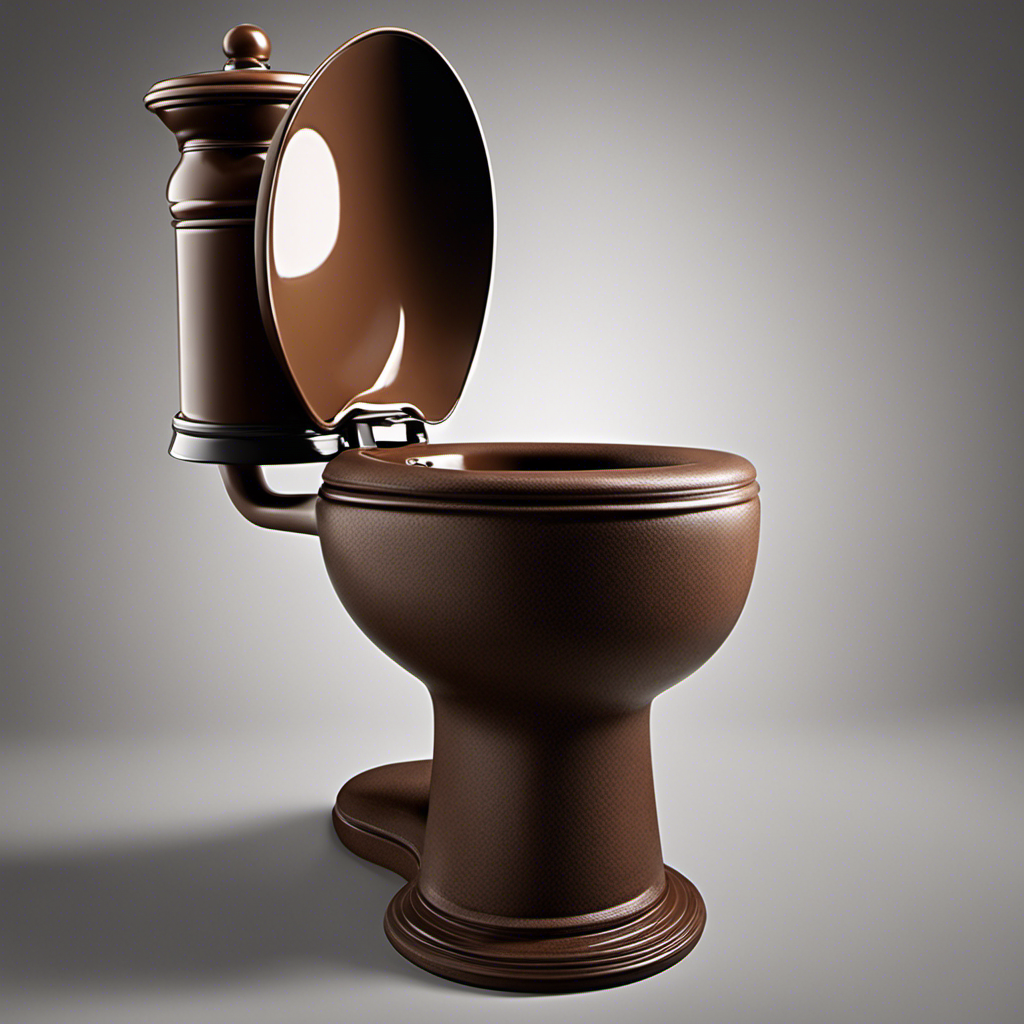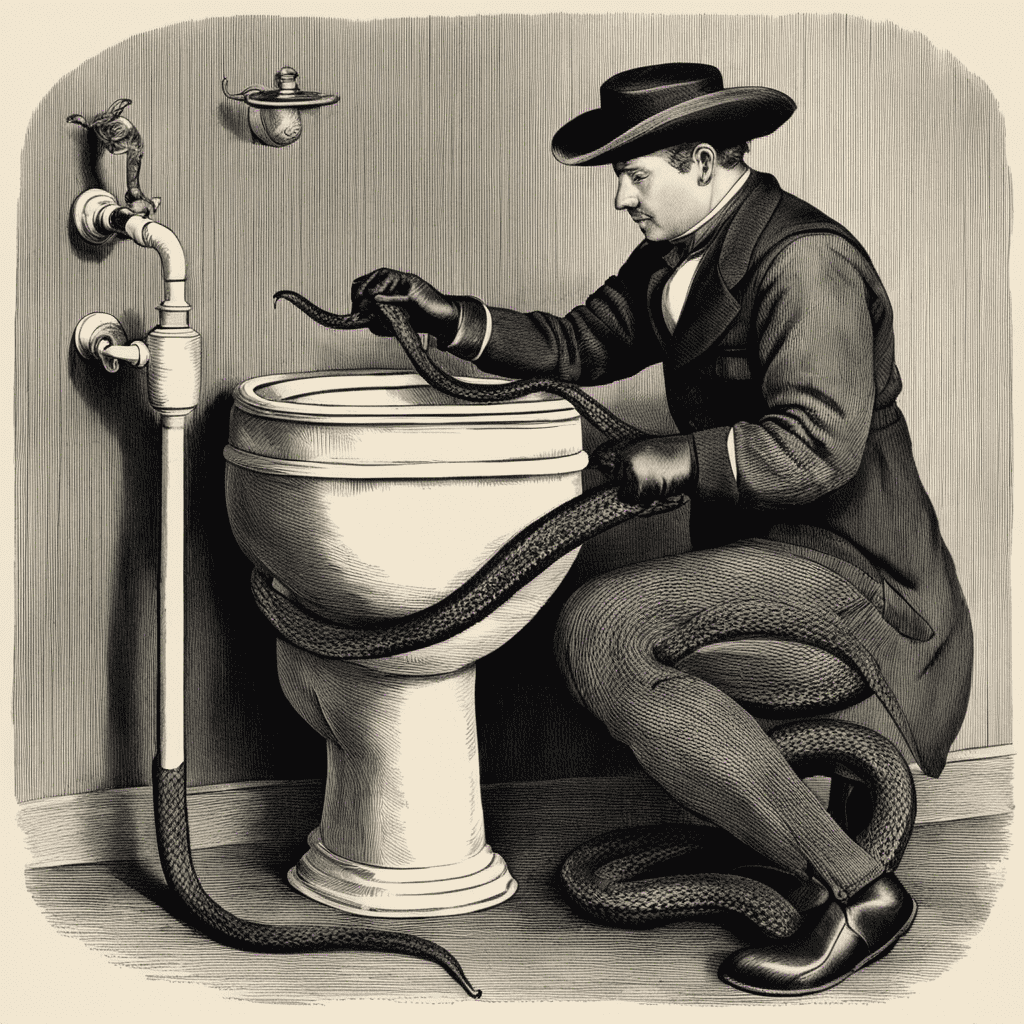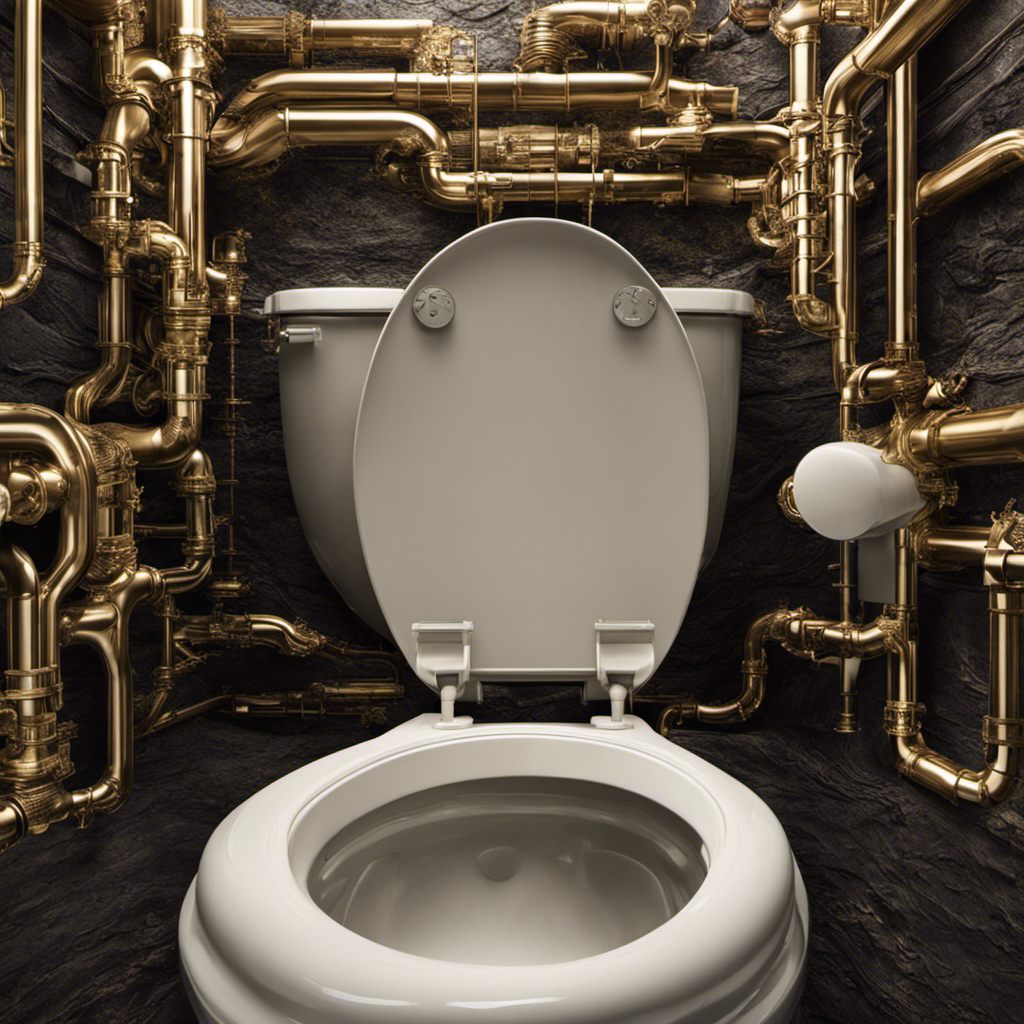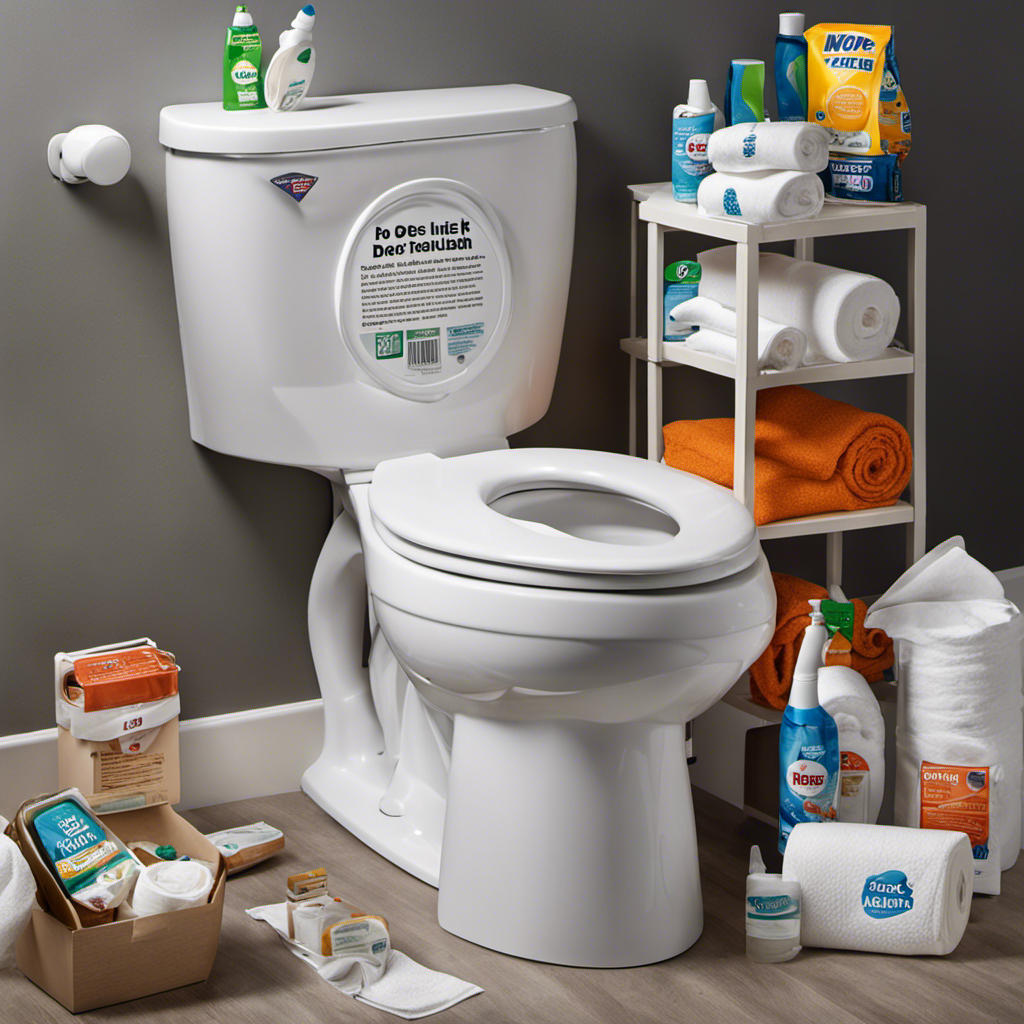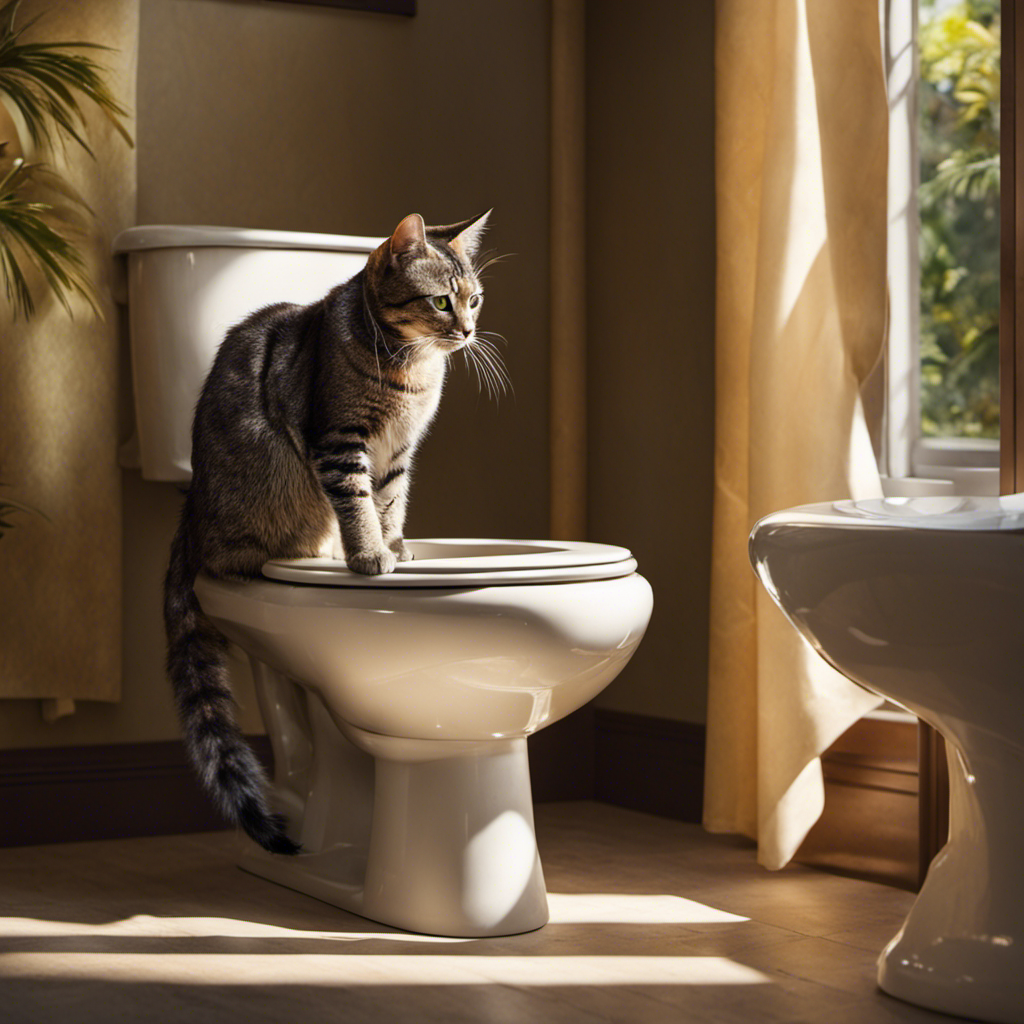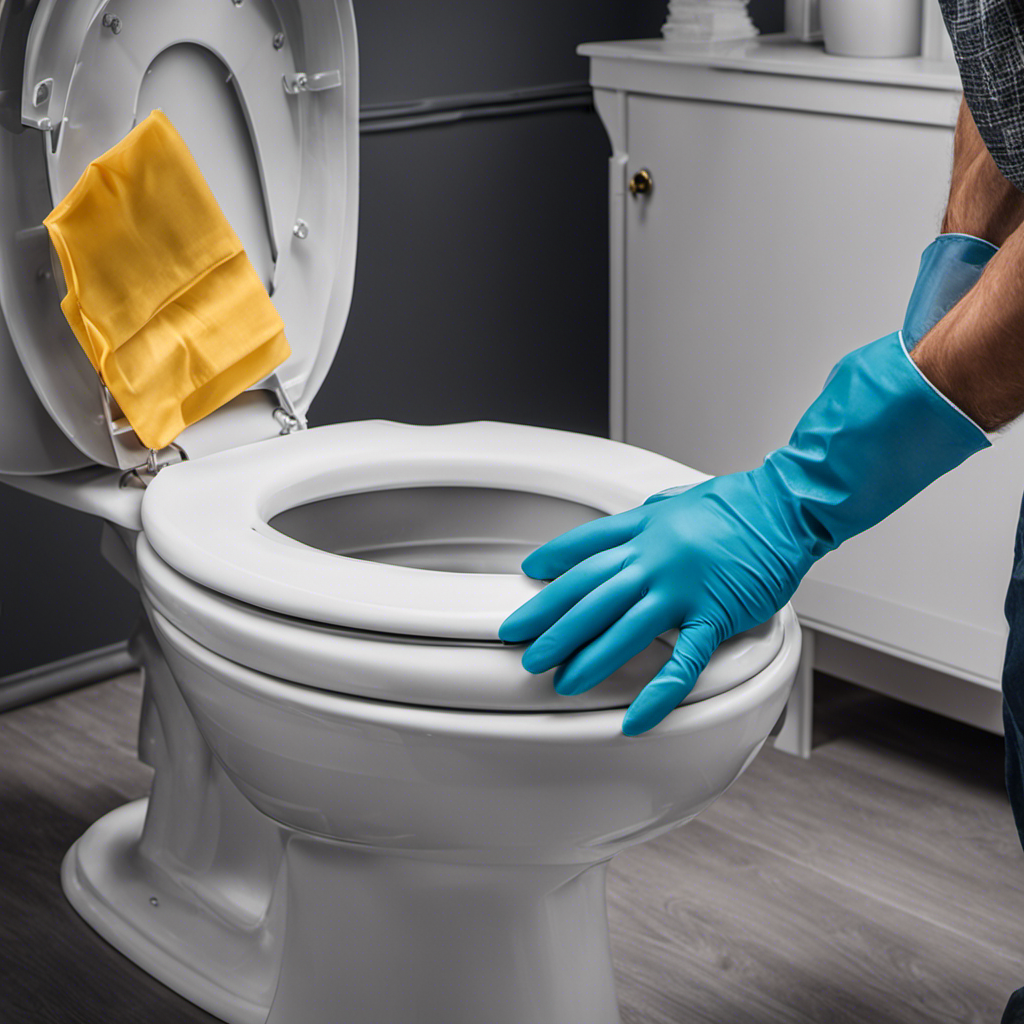Did you know that clogged toilets are one of the most common plumbing issues homeowners face?
Well, fear not, because I’m here to help you tackle this messy situation head-on.
In this article, I will guide you through the step-by-step process of using a plunger to unclog your toilet, even if there’s poop involved.
By understanding the anatomy of a plunger and avoiding common mistakes, you’ll be equipped with the knowledge and skills to handle any stubborn clog.
So, let’s dive in and get your toilet back to its sparkling clean state!
Key Takeaways
- Plunging vigorously without a proper seal will not solve the problem of poop in the toilet.
- Using a plunger specifically designed for toilets with a flange will provide a better seal and increase effectiveness.
- Consider using a toilet auger or snake for tougher clogs caused by poop.
- If the clog persists, it may be necessary to seek professional help.
Step-By-Step Guide to Unclogging a Toilet With a Plunger
First, make sure there is enough water in the toilet bowl before using the plunger.
Using a plunger is a common and effective method to unclog a toilet. However, there are also alternative methods you can try if you don’t have a plunger on hand.
One option is to use a toilet auger, which is a long, flexible tool designed specifically for unclogging toilets.
Another DIY method is to create a homemade drain cleaner using a mixture of baking soda and vinegar. Simply pour the baking soda into the toilet bowl, followed by the vinegar, and let it sit for a few minutes before flushing.
These alternatives can be helpful when a plunger is not available or when dealing with stubborn clogs.
Understanding the Anatomy of a Plunger for Effective Use
To effectively tackle the situation, you’ll want to begin by understanding how this common household tool works. A plunger is a simple yet effective device used to unclog toilets and drains. Here are some key points to consider:
-
Different types of plungers: There are two main types of plungers – the cup plunger and the flange plunger. The cup plunger is suitable for sinks and flat drains, while the flange plunger is designed for toilets with its added rubber flange for a better seal.
-
Proper technique: When using a plunger, make sure there is enough water to cover the plunger’s cup or flange. Apply firm pressure and vigorously push and pull to create suction. Repeat as necessary until the clog is cleared.
-
Cleaning and maintenance: After each use, rinse the plunger with warm water to remove any debris. For a thorough clean, soak it in a mixture of hot water and vinegar. Store it in a dry and clean place to prevent the growth of bacteria.
Understanding the different types of plungers and knowing how to properly clean and maintain your plunger will ensure its effectiveness and longevity.
Common Mistakes to Avoid When Plunging a Toilet With Poop
One common mistake to avoid when unclogging a toilet with feces is not ensuring a strong seal between the plunger and the drain. Many people make the misconception that simply plunging vigorously will solve the problem. However, without a proper seal, the plunger will not create the necessary suction to dislodge the clog. To achieve a strong seal, press the plunger firmly against the drain and ensure it covers the entire opening. Additionally, make sure the toilet bowl has enough water to create the necessary pressure for effective plunging.
To prevent future toilet clogs, there are a few simple steps you can take. First, be mindful of what you flush down the toilet. Avoid disposing of items like sanitary napkins, wipes, or excessive amounts of toilet paper, as these can easily cause clogs.
Second, consider using a toilet auger, also known as a snake, to remove stubborn clogs.
Tips and Tricks to Maximize the Effectiveness of Your Plunger
For better results, make sure you firmly press the plunger against the drain to create a strong seal. This will help maximize the effectiveness of your plunger and unclog the drain more efficiently.
Here are some tips and tricks to further enhance your plunging experience:
- Keep your plunger clean and free from debris to ensure its proper functioning.
- Use a plunger specifically designed for toilets, as they have a flange that helps create a better seal.
- For tougher clogs, consider using a toilet auger or snake to break up the blockage before using the plunger.
- Remember that different types of clogs may require different plungers, so it’s essential to have the correct plunger for the job.
Following these tips and properly maintaining your plunger will not only prolong its lifespan but also ensure you have a reliable tool for dealing with various types of clogs effectively.
Troubleshooting and Alternative Methods for Stubborn Clogs
If you’re dealing with a stubborn clog, try using a drain snake or auger to break up the blockage before attempting to plunge.
A toilet auger is a tool specifically designed to tackle tough clogs in the toilet. It features a long, flexible cable with a corkscrew-like tip that can easily navigate through the pipes and break up the obstruction.
Simply insert the auger into the toilet bowl and rotate the handle to feed the cable into the drain. Once you feel resistance, continue rotating to break up the clog.
Another option is to use a chemical drain cleaner, but be cautious as these can be harsh and potentially damage your pipes if used improperly. Follow the instructions on the product carefully and use protective gloves and eyewear.
Keep in mind that these cleaners may not be as effective on solid clogs, so using a toilet auger is often the best choice for stubborn blockages.
Conclusion
In conclusion, mastering the art of plunging a toilet with poop is like taming a wild beast. With the right technique, you can conquer even the most stubborn clogs.
Remember, the plunger is your trusty weapon in this battle, so wield it with confidence. Avoid common mistakes and follow the step-by-step guide to ensure success.
And if all else fails, don’t despair! There are alternative methods and troubleshooting tips to help you emerge victorious in the war against clogged toilets.
Happy plunging, my fellow warriors!
